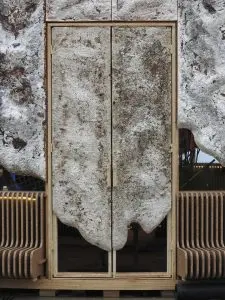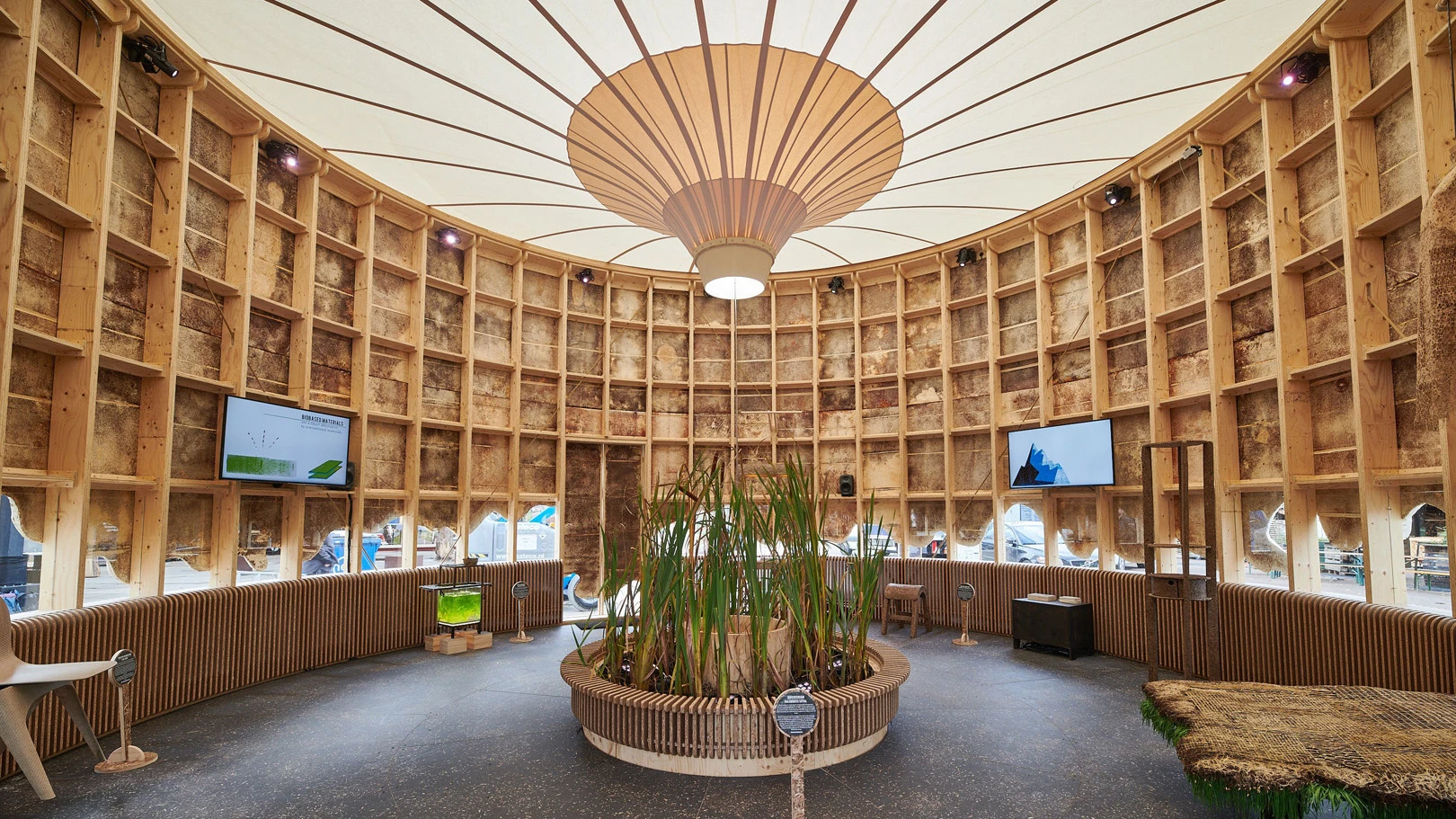The round building looks something like a giant birthday cake coated in spiderwebs. It’s beautiful, yet a bit haunting. Look closer, though, and you’ll realize this structure has nothing but love for its surroundings. Because while materials ranging from concrete to insulation are wrecking our environment, the Growing Pavilion is made entirely from materials that grew on this planet.

The Growing Pavilion debuted at the recent Dutch Design Week in Eindhoven. The studios behind the building include Company New Heroes and Krown-design, the latter of which specializes in producing structures and even furnishings out of mycelium. As Jan Berbee, cofounder of the company, explains over email, the standard rigid foam plastic EPS panels we see on most buildings emit three times their weight in CO2. But growing mycelium actually offsets the carbon footprint of a building, because mycelium captures twice its weight in CO2.

Berbee likens the properties of mycelium to those of wood, pointing out that it gets its strength in bulk. The substance does have some insulating properties, which is one reason it’s being considered for growing buildings on Mars.
But what is it like to actually live in, I wonder. “A mycelium product smells lightly,” Berbee concedes. “Difficult to say what [what it smells like]. Does a champignon smell? Or an oyster mushroom?” Perhaps. Then again, neither of these things could possibly smell worse than one of the construction industry’s favorite materials: formaldehyde.
Recognize your brand’s excellence by applying to this year’s Brands That Matter Awards before the early-rate deadline, May 3.
